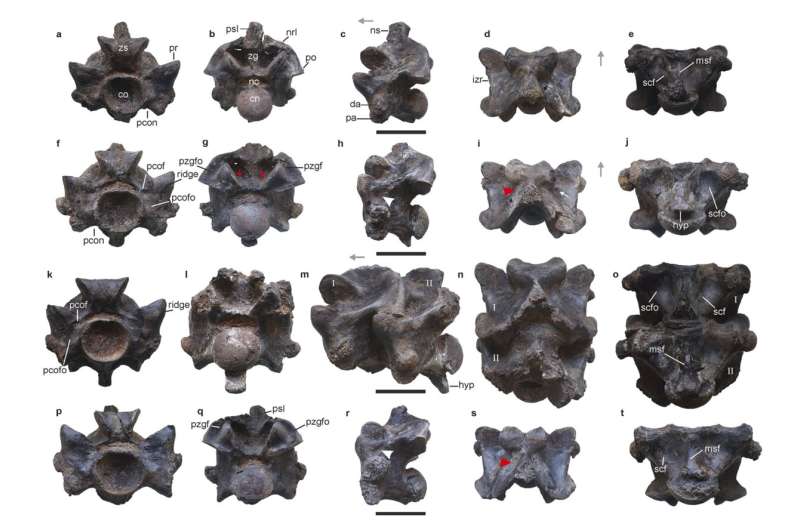This article has been reviewed according to Science X's editorial process and policies. Editors have highlighted the following attributes while ensuring the content's credibility:
fact-checked
peer-reviewed publication
reputable news agency
proofread
This ancient snake in India might have been longer than a school bus and weighed a ton

A ancient giant snake in India might have been longer than a school bus and weighed a ton, researchers reported Thursday.
Fossils found near a coal mine revealed a snake that stretched an estimated 36 feet (11 meters) to 50 feet (15 meters). It's comparable to the largest known snake at about 42 feet (13 meters) that once lived in what is now Colombia.
The largest living snake today is Asia's reticulated python at 33 feet (10 meters).
The newly discovered behemoth lived 47 million years ago in western India's swampy evergreen forests. It could have weighed up to 2,200 pounds (1,000 kilograms), researchers said in the journal Scientific Reports.
They gave it the name Vasuki indicus after "the mythical snake king Vasuki, who wraps around the neck of the Hindu deity Shiva," said Debajit Datta, a study co-author at the Indian Institute of Technology Roorkee.
This monster snake wasn't especially swift to strike.
"Considering its large size, Vasuki was a slow-moving ambush predator that would subdue its prey through constriction," Datta said in an email.
Fragments of the snake's backbone were discovered in 2005 by co-author Sunil Bajpai, based at the same institute, near Kutch, Gujarat, in western India. The researchers compared more than 20 fossil vertebrae to skeletons of living snakes to estimate size.
While it's not clear exactly what Vasuki ate, other fossils found nearby reveal that the snake lived in swampy areas alongside catfish, turtles, crocodiles and primitive whales, which may have been its prey, Datta said.
The other extinct giant snake, Titanoboa, was discovered in Colombia and is estimated to have lived around 60 million years ago.
What these two monster snakes have in common is that they lived during periods of exceptionally warm global climates, said Jason Head, a Cambridge University paleontologist who was not involved in the study.
"These snakes are giant cold-blooded animals," he said. "A snake requires higher temperatures" to grow into large sizes.
So does that mean that global warming will bring back monster-sized snakes?
In theory, it's possible. But the climate is now warming too quickly for snakes to evolve again to be giants, he said.
More information: Debajit Datta, Largest known madtsoiid snake from warm Eocene period of India suggests intercontinental Gondwana dispersal, Scientific Reports (2024). DOI: 10.1038/s41598-024-58377-0. www.nature.com/articles/s41598-024-58377-0
Journal information: Scientific Reports
© 2024 The Associated Press. All rights reserved. This material may not be published, broadcast, rewritten or redistributed without permission.




















